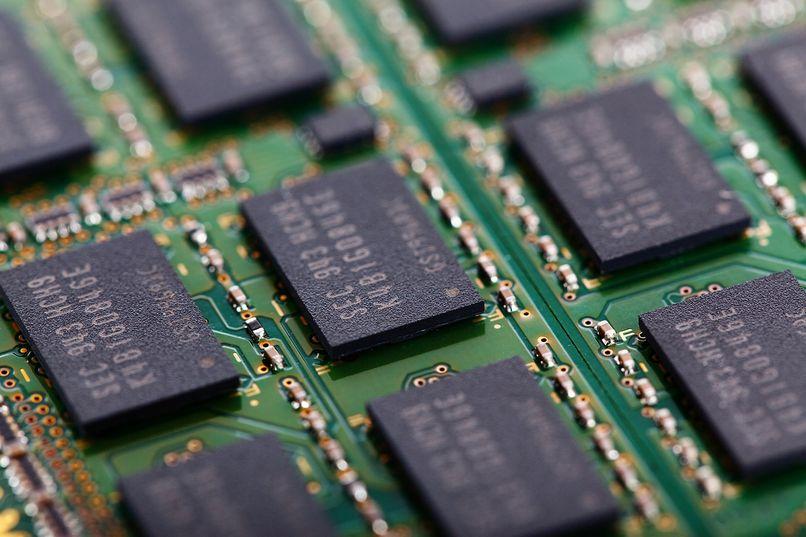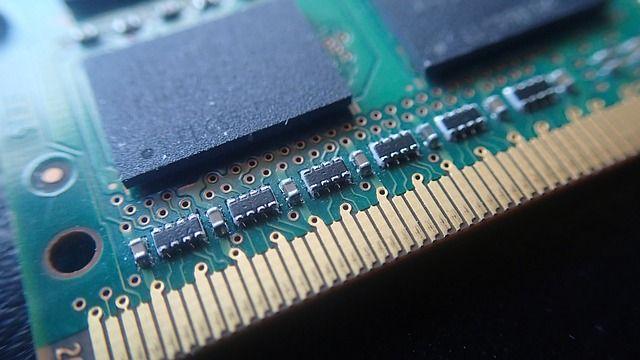What is the Difference between DDR3 & DDR4 ?
There are two types of rams, i. E. Ddr3 and ddr4. The full form of ram is random access memory. It is used to store ddr3l ram can task at both 1. 5v and 1. 35v. Ddr4 ram looks faster on paper when data is transferred, we measure it in two ddr3 ram requires 1. 5v at a constant rate compared to ddr3, i. E. 1. 2v. Ddr4 ram requires a much lesser amount. …
We all face a horrible problem of storage in our devices. This is very difficult to deal with and at times, very annoying that every time before installing any new software, you first have to remove or clear space from your current device.
If you have faced such a problem, you might have known about different types of RAMs.
There are two types of RAMs, i.e. DDR3 and DDR4. Therefore, you might ask a question about what is the difference between DDR3 and DDR4.
Here we will discuss all different types pf RAMs and their differences along with which one will be the best-suited one for your device.
What is RAM?
The full form of RAM is random access memory. It is used to store frequently used data and files or data that r accessed by your processor (CPU). High-end laptops, PCs or desktop comes up with more RAM than low-end ones.
You might come up with another question that why are we using RAMs when we ca use many robust features of Hard-disk drives i.e. is the HDDs and Solid-state drives i.e. the SSDs?
The reason for this is that HDD and SSD are much slower as compared to RAM in case of reading and writing in memory.
The memory bus i.e. the connection of CPU and RAM is specially designed for the high-speed job, as well as it only needs a small amount of energy to do so. 
Working with a hard-drive is working more with pen and paper, first, you need to get the paper and write on it. Whereas working with RAM is more like you have everything in front of you.
ddr3 & ddr4 Ram Don’t Work Together
The first perceptible difference between the two RAM-types is the physical design of the pins on each module. DDR3 RAM practices a 240-pin connector, while DDR4 RAM uses a 288-pin connector.
Why are they different?
A motherboard and CPU that work with DDR3 RAM do not work with DDR4 RAM and vice versa. The various connectors guarantee no one unintentionally installs the wrong type of memory.
Besides, take note that not all RAM works with all processors, even if it fits into the motherboard. Take time to explore and make sure all parts of your PC are likeminded.
If you need a hand, PC Part Picker has a wonderful tool that shows you what works together and what does not.
You might also hear mention of DDR3L RAM. This RAM has similar pins and works with any CPU and motherboard that works perfectly with DDR3 RAM.
The difference?
DDR3L RAM can task at both 1.5V and 1.35V, while DDR3 RAM stucks at 1.5V.
ddr4 Ram Looks Faster on Paper
When data is transferred, we measure it in two units, one is a million transfers per second (MT/s) and the second one is giga transfer per second (GT/s).
Transfer Rate
More the transfer more is the bandwidth and more efficiently, it can transfer a large amount of data. The more bandwidth is provided, the more you can transfer files and can more data can be accessed.
Well, DDR4 RAMs are capable of transferring data rates between 2133MT/s and 4266MT/s; whereas DDR3 RAM can only transfer the same data at a much lower rate i.e. 700MT/s and 2133MT/s.
Clock Speed
Another significant difference that you can see is the clock speed, in which RAM can perform its task more efficiently. It is called the clock speed, which helps you to distinguish between the speeds of different DDRs. The clock speed is represented in megahertz.
Well, clock speed is nothing but the number of cycles per second the RAM can perform.
Column Access Strobe Latency
Last but not least, you should also consider CL, i.e. Column Access Strobe latency. CL is something that I am sure few of you must be unfamiliar with.
It is the total number of clock cycles a RAM requires to deliver a piece of data in CPU or any data requested by the CPU.
However, higher clock speed and higher data transfer don’t need to make your work faster. It depends on the processing capacity of all the different RAMs available.

You have to distinguish between these RAMs individually and carefully so that you can use them according to your requirements.
While you are haunting for RAMs, do remember the specification mentioned above before making up a choice. The costly product does not necessarily mean you can provide you with faster and better performance.
ddr4 Ram Uses a Lower Voltage
DDR3 RAM comes with another variation of DDR3L, both of them requires a very low voltage. DDR3 RAM requires 1.5V at a constant rate, whereas DDR3L RAM requires both 1.35V and 1.5V. DDR4 RAM requires a much lesser amount of voltage as compared to DDR3, i.e. 1.2V.
However, this is not much difference between the two voltage requirements of DDR3 AND DDR4. You will not see much difference in the electricity bills of these RAMs.
ddr4 Ram Cost More
DDR4 will cost a bit more than DDR3. More power is the cost. DDR4 is a bit more powerful than DDR3 and hence, there is a price hike. However, in the years passed by the price has also lower.
However, DDR4 is always purchased at a higher price than DDR3. You have to decide which one is the best for you and your device do not worry about price.
So, Which Ram, Do I Choose?
Selecting the perfect RAM depends on the type of hardware you are currently using.
What are your plans, where you will upgrade it, rebuild it, or replace it?
But always remember to check the compatibility factors of your CPU.

Hello! My name is Lucas, and I am the creator of ursuperb.com. I’ve been writing about technology for almost 10 years now, and I love talking about tech news, reviews, and tutorials. I’m currently living in San Francisco, CA, and I’ve been blogging professionally since 2012. I love what I do, and I really enjoy interacting with people online. I believe in creating positive change for humanity, and I try to inspire others to do the same. You can read more about me here.
My favorite thing about Ursuperb is that I’m able to provide useful information to anyone interested in learning more about technology. No matter what kind of tech you use (computer, smartphone, tablet), you will definitely find something interesting to read on Ursuperb. So, let’s take a look at some of the topics I cover on Ursuperb:
1) How To Build An Online Business With WordPress
2) How To Make Money On YouTube Using AdSense
3) What Is Google Analytics? And Why Should You Use It?
4) How To Make Your Own Website Design Software For Free


